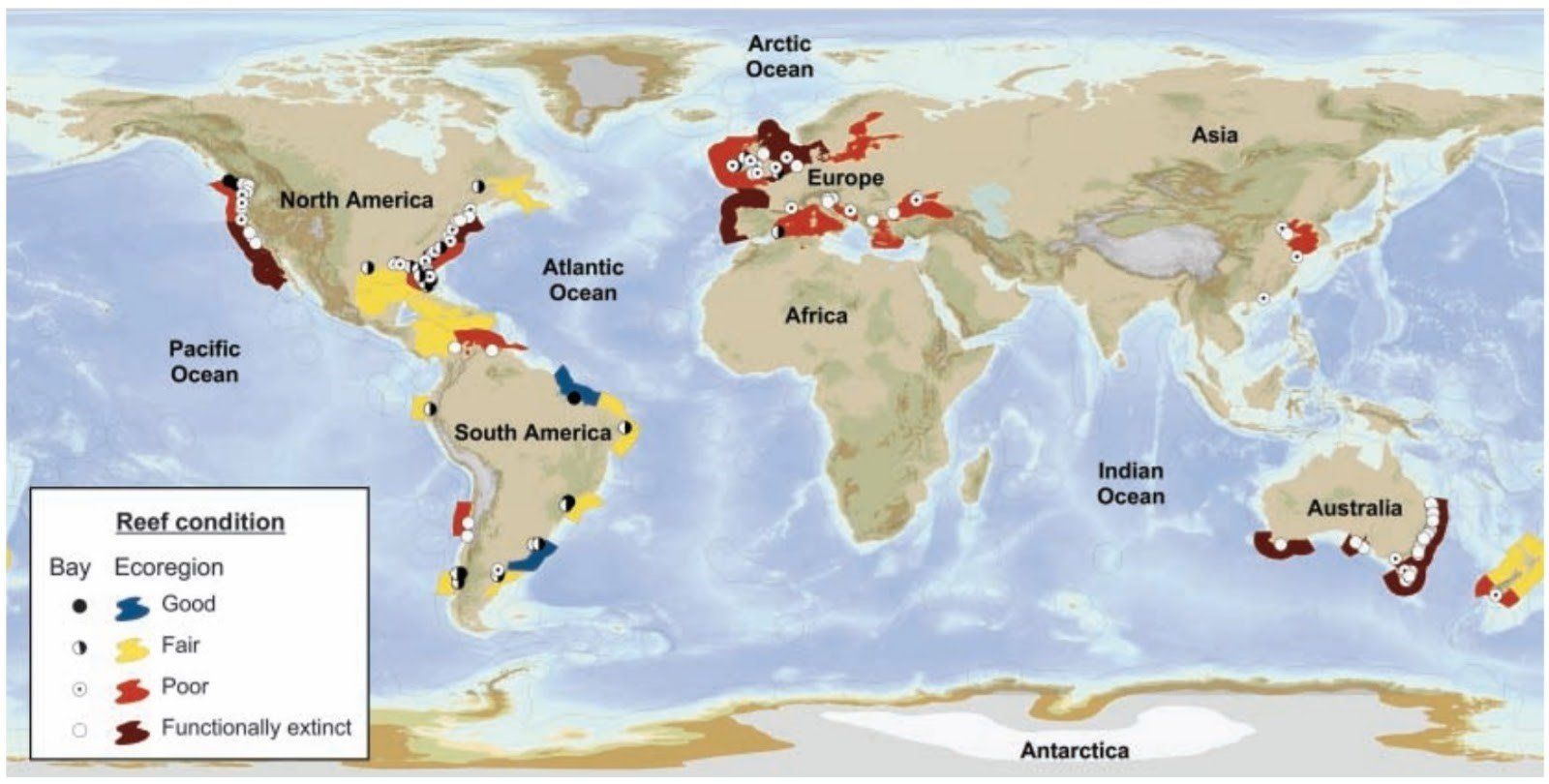Have We Eaten all the Oysters?
Oysters have been a popular food for centuries. Originally harvested locally by coastal communities, then being exported around the known world by the Romans, oyster fisheries have grown to be a massive (and highly valuable) resource.
Unfortunately, they are now under threat and the population of the native, or European flat oyster ( Ostrea edulis ) has plummeted in recent years. However, hope for the restoration of the species may have been found at Strangford Lough, in Northern Ireland.
The native oyster was once common across Europe and provided many services for us and the environment. However, over-fishing, increasing water pollution and the use of dredges and explosives on the sea bed have massively reduced the population size in the last 200 years. It is now estimated that over 85% of the oyster population has been lost, and there is growing concern that the species may never recover. Small pockets of native oysters still exist, but they are now in direct competition with invasive species such as the faster growing pacific oyster ( Crassostrea gigas ) and often attacked by diseases such as Bonamia ostreae.
Native oysters reproduce by males releasing sperm into the water for the females to take in to fertilise the eggs inside them. The larvae are then released, and swim in the sea for about 2 weeks before needing to find a hard surface (ideally the shells of other live oysters) to settle on. This means that in areas where native oyster numbers are very low, it is rarer for females to be able to fertilise eggs, and the few that are fertilised are often unable to find suitable surfaces to settle on, causing the larvae to die. This can create a cycle where the larvae die before settling, and the older oysters die from human harvesting or old age, continuously shrinking the number of good settlement areas for oyster larvae and driving the species towards extinction.
The continuation of over-fishing
and destructive fishing, increasing water pollution and disease prevalence, and
competition with invasive species, combined with the complex life cycle of the
native oyster, means that is very rare for native oyster populations to recover
without intensive restoration schemes. UK based restoration projects in the Solent
and Essex have had some success, repopulating the
local area with mature oysters able to reproduce in the area and improving the
quality of the surrounding sea bed. However, these are intensive and expensive, long
term projects.
At Strangford Lough, the native oyster population has been found to have the potential to repopulate itself, without the need for human assisted restoration projects. This lough is a rare haven for native oysters, with a large number of environmental protections enforced in the area. A number of sites within Strangford Lough have been found to have higher larvae settlement than others. Sites that had mostly shells on the seabed had higher densities of native oyster larvae settlement than sites where the seabed was mostly mud or stones, and often higher numbers of multiple oysters settled on one another. The site of Cunningburn, on the Northern edge of the lough, has been found to have the highest settlement of native oyster close to, or on other oysters, with over 16 conjoined oysters covering an area of 6.8m2 within survey areas. This is the first time conjoined native oysters have been recorded in such a high density in Ireland and represents important evidence that the native oyster population may be able to recover without dedicated restoration projects.
The success of the native oyster at Cunningburn is thought to be due to the unusual layout of the seabed in the area. There are large blue mussel ( Mytilus edulis ) banks in the area, which form a network of intertidal pools. Most of the oysters in the area were found within the pools formed by the mussels and it is likely that the pools protected the oysters within them from changing temperatures and tides, and prevented the oyster larvae from dispersing when released from the oysters. This would increase the concentration of larvae within the pools and increase the chances of survival and successful settlement on oysters already in the pools.
The findings at Strangford Lough are currently unique, but
they provide inspiration to everyone working on native oyster restoration
projects. It is anticipated that the findings at Strangford Lough can be used
to develop further, unassisted oyster restoration techniques, hopefully helping
to prevent the extinction of the native oyster.
References:
Helmer, L., Farrell, P., Hendy, I., Harding, S., Robertson, M., & Preston, J. (2019). Active management is required to turn the tide for depleted Ostrea edulis stocks from the effects of overfishing, disease and invasive species. PeerJ, 7, e6431
Smyth, D. M., Horne, N. S., Ronayne, E., Millar, R. V., Joyce, P. W., Hayden‐Hughes, M., & Kregting, L. (2020). Wild gregarious settlements of Ostrea edulis in a semi‐enclosed sea lough: a case study for unassisted restoration. Restoration Ecology, 28(3), 645-654.
SHARE THIS ARTICLE















